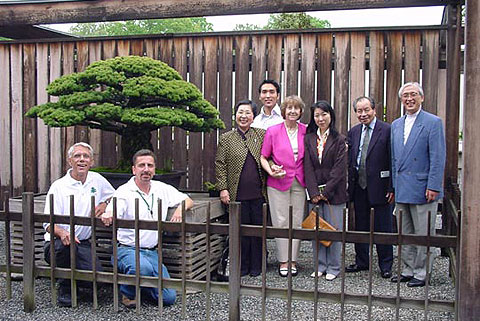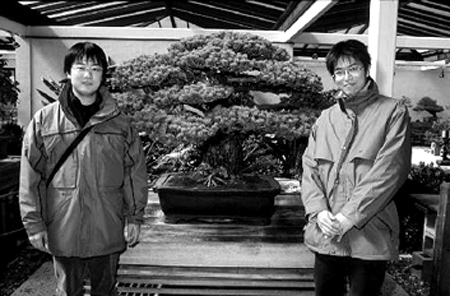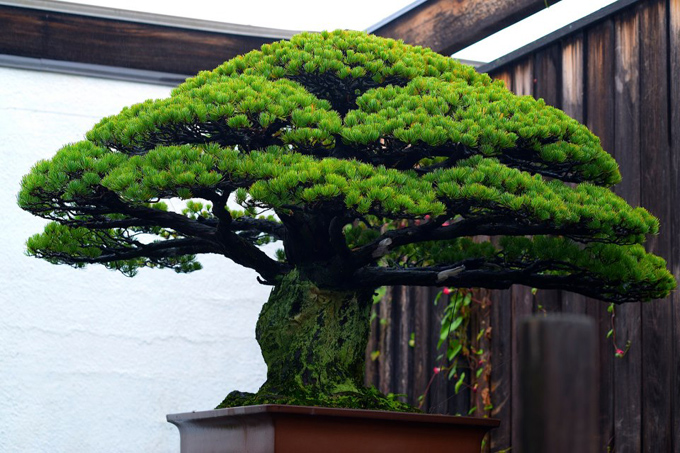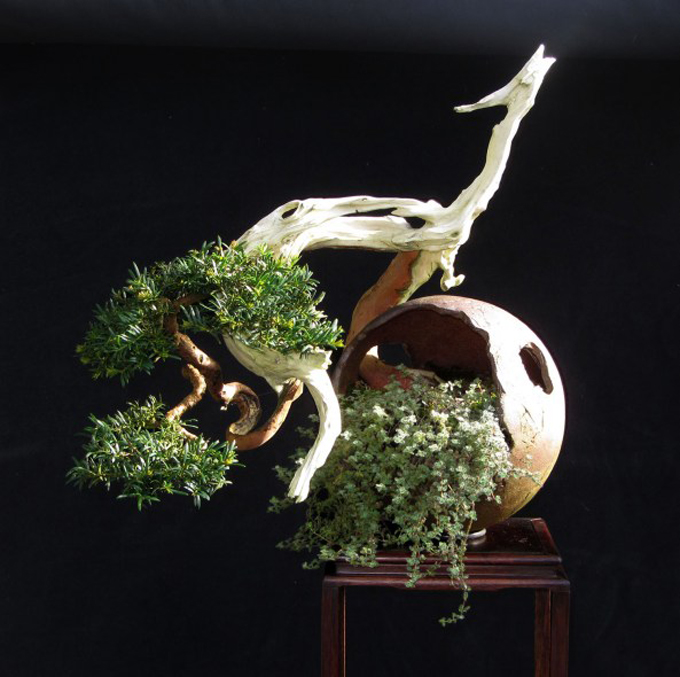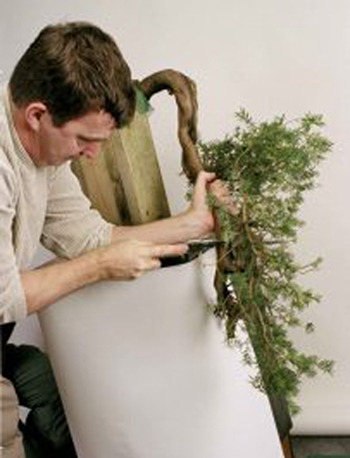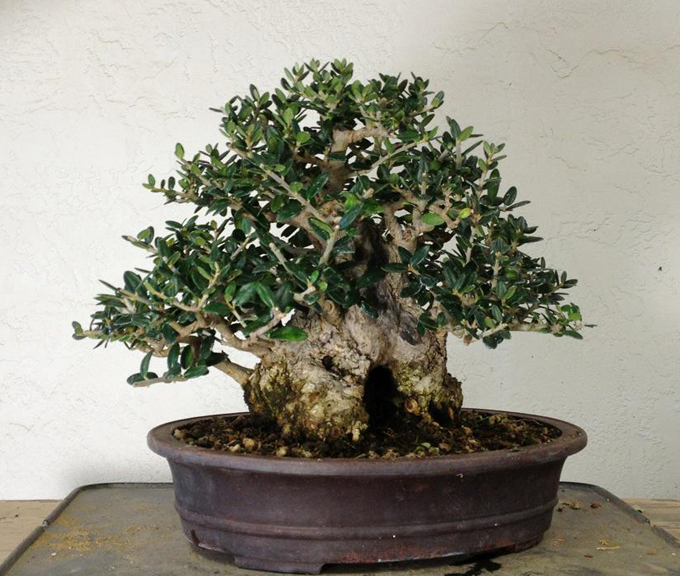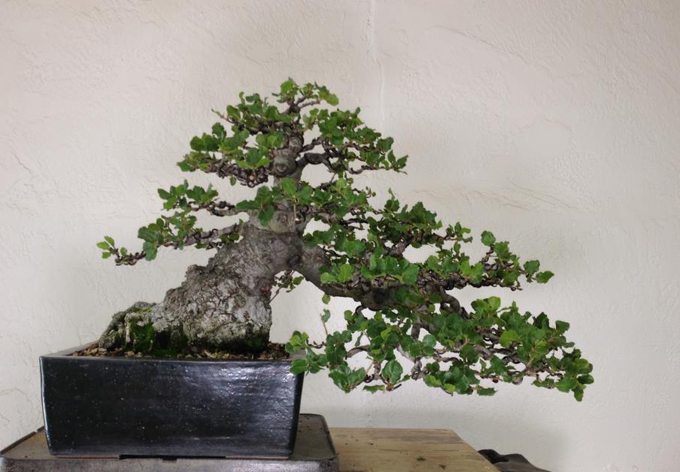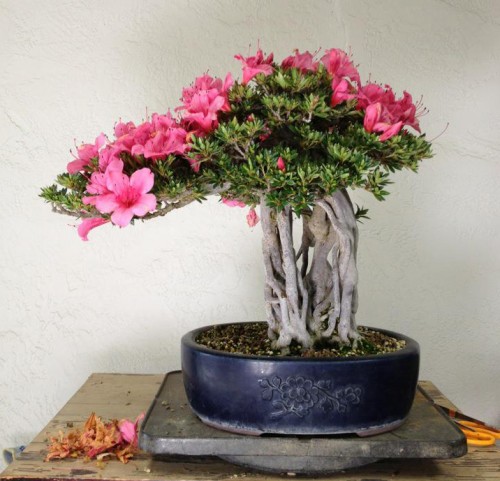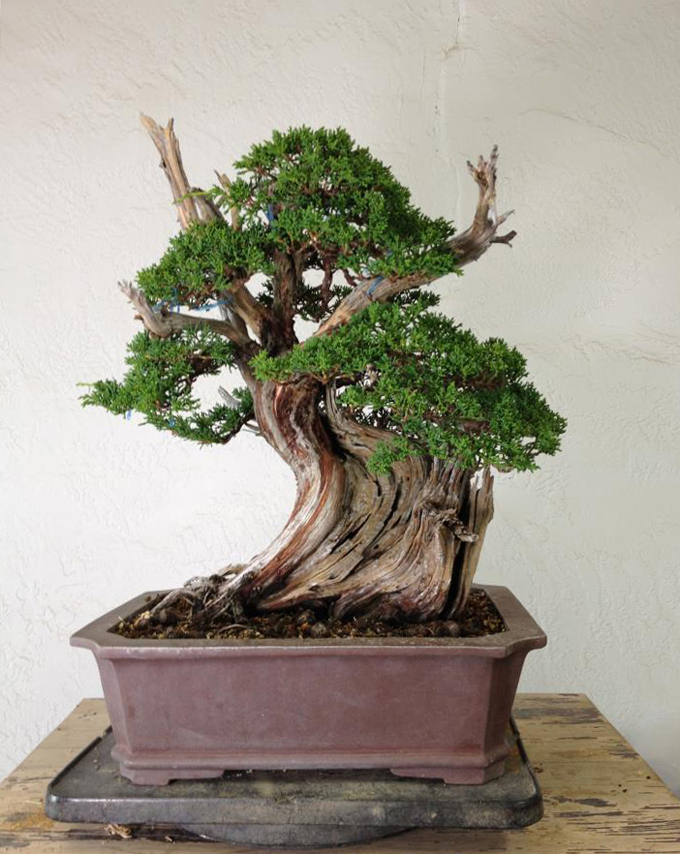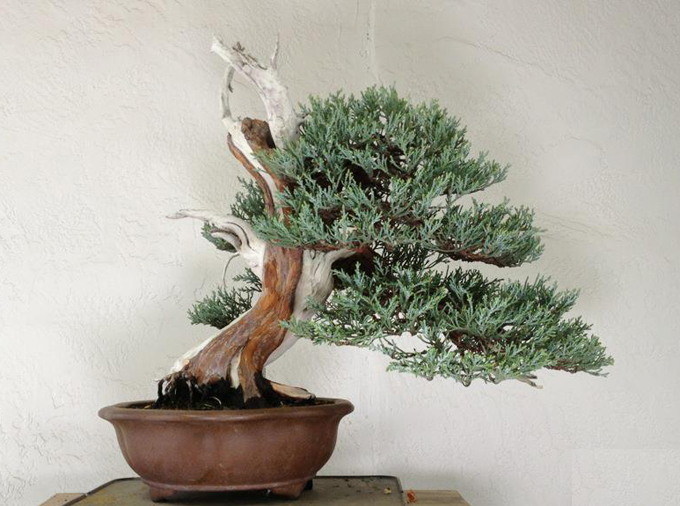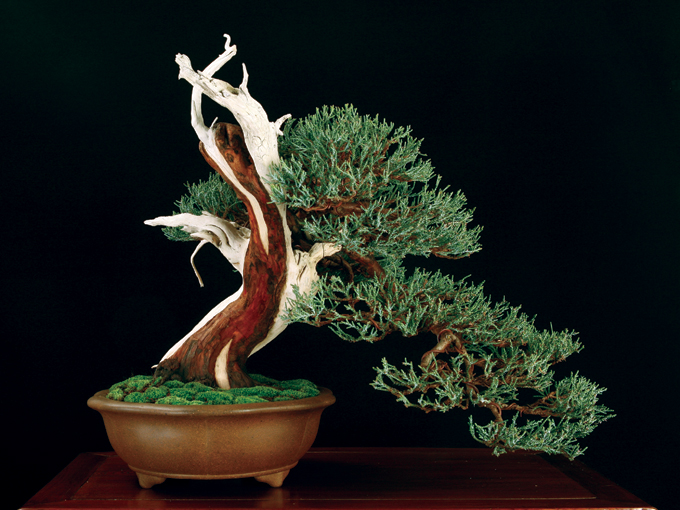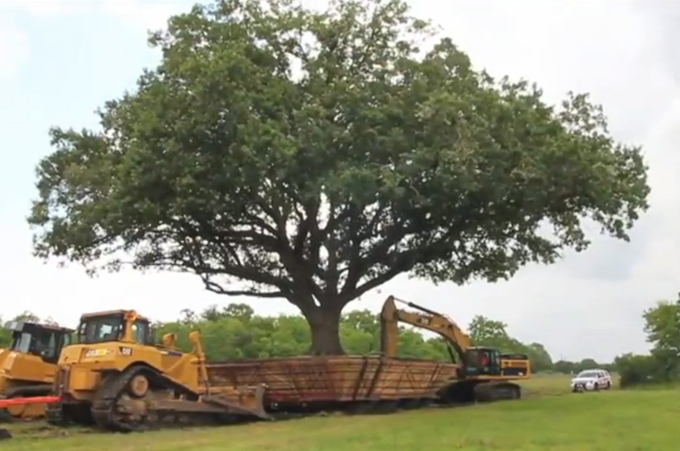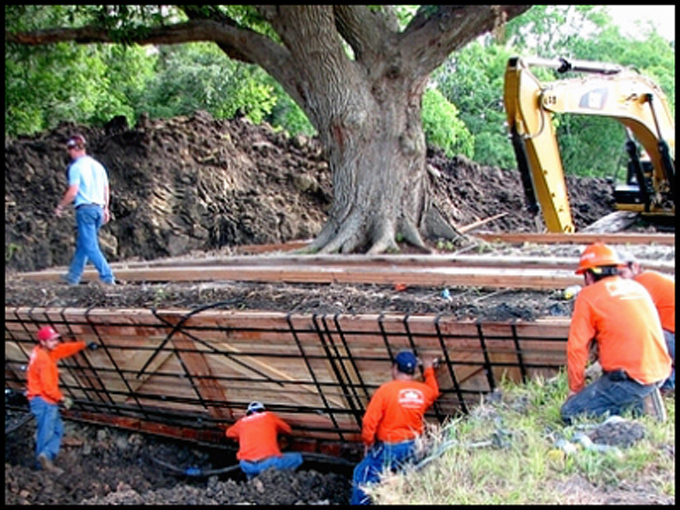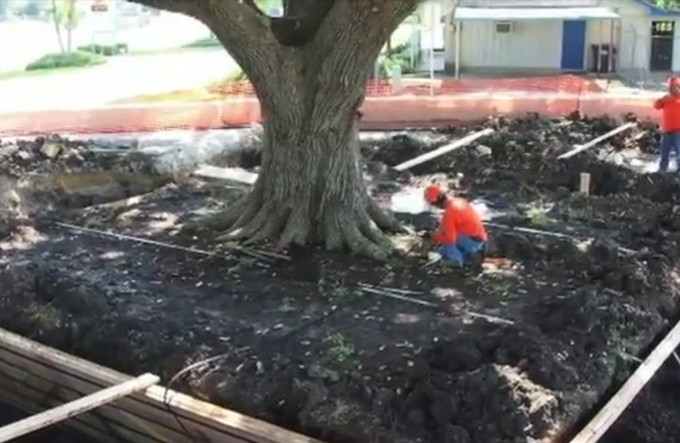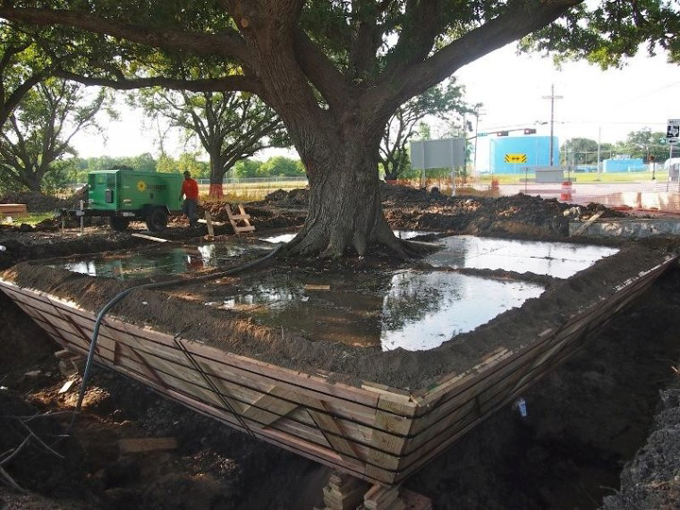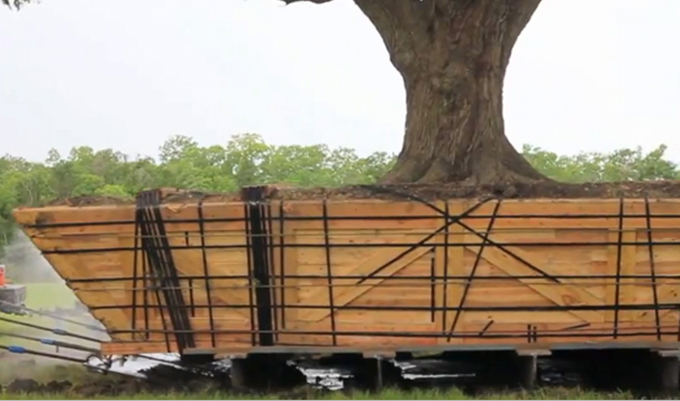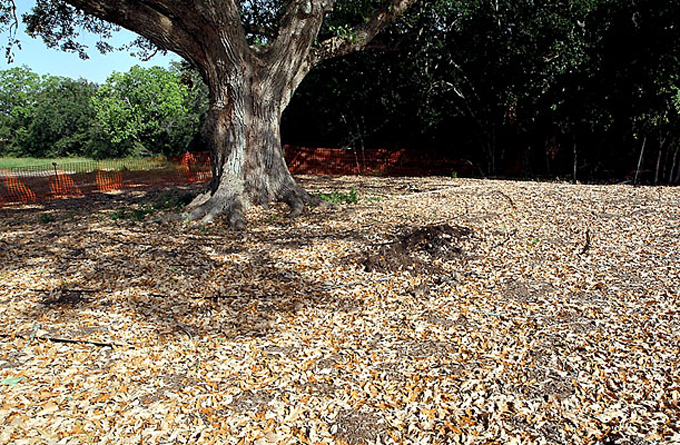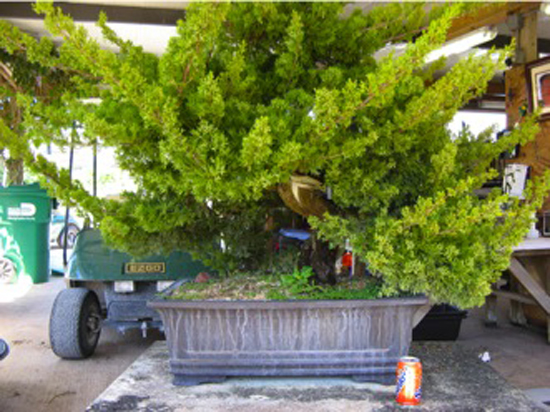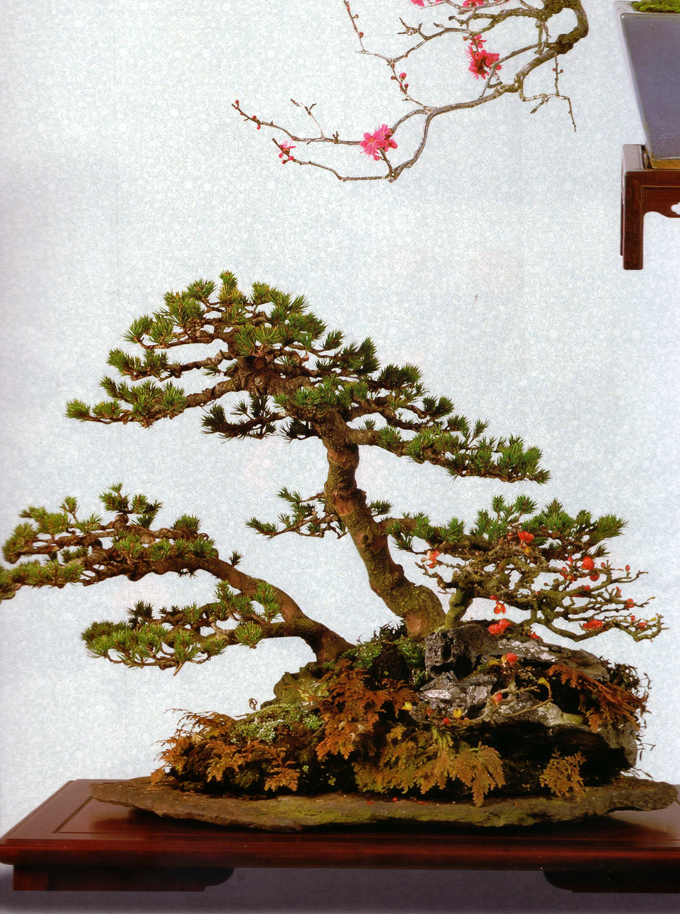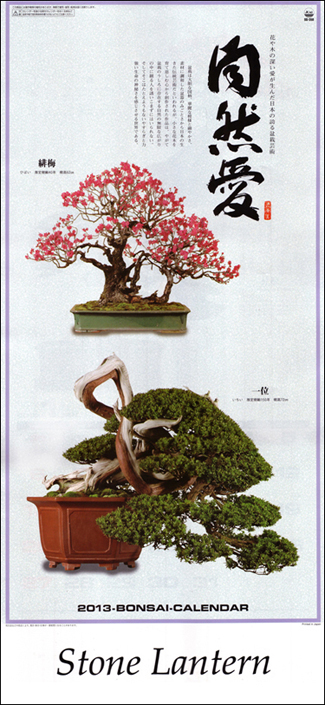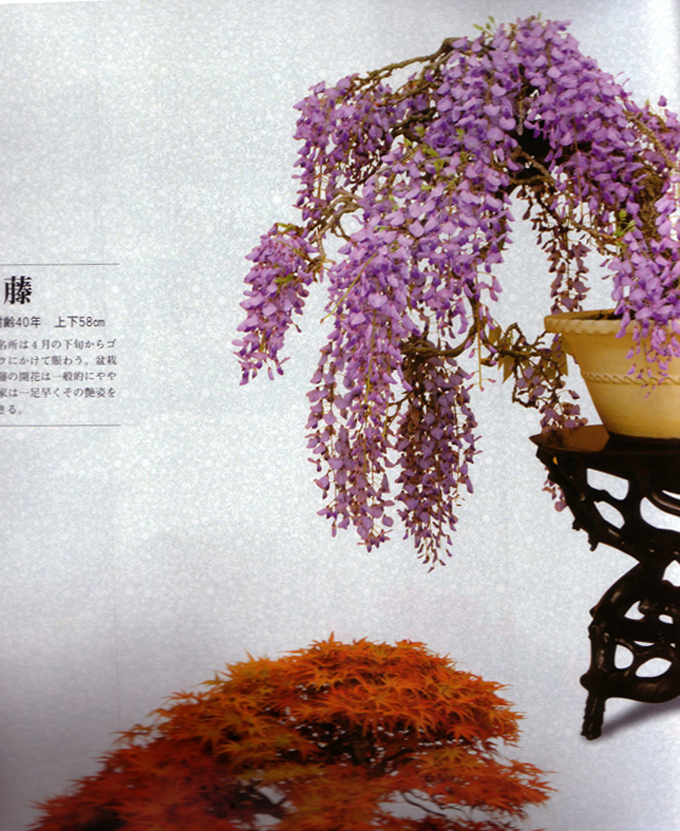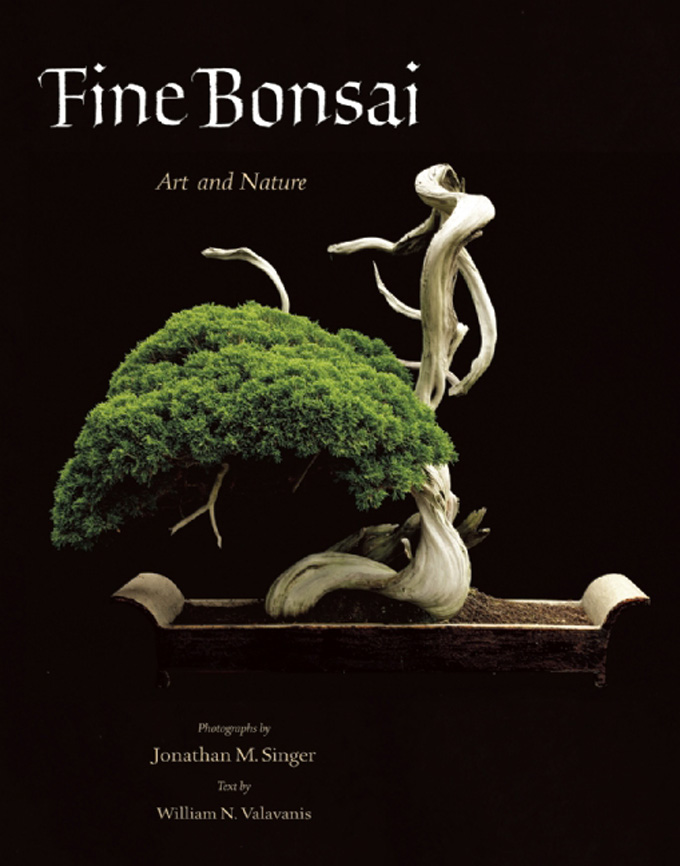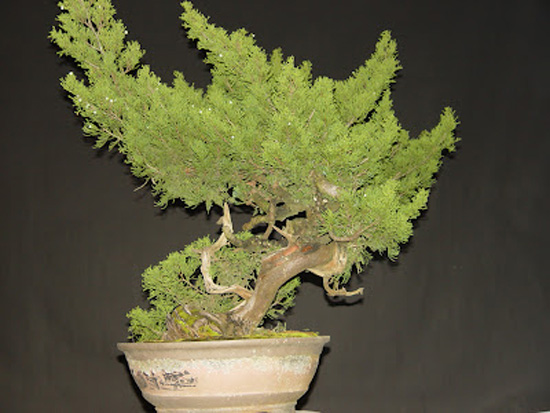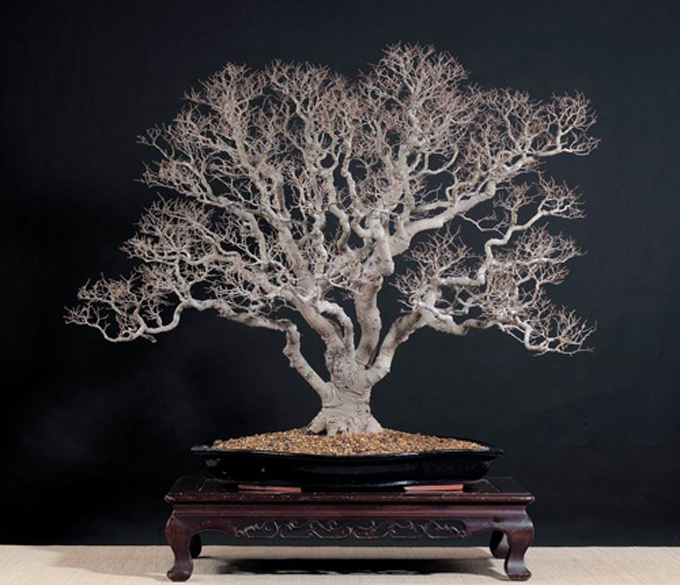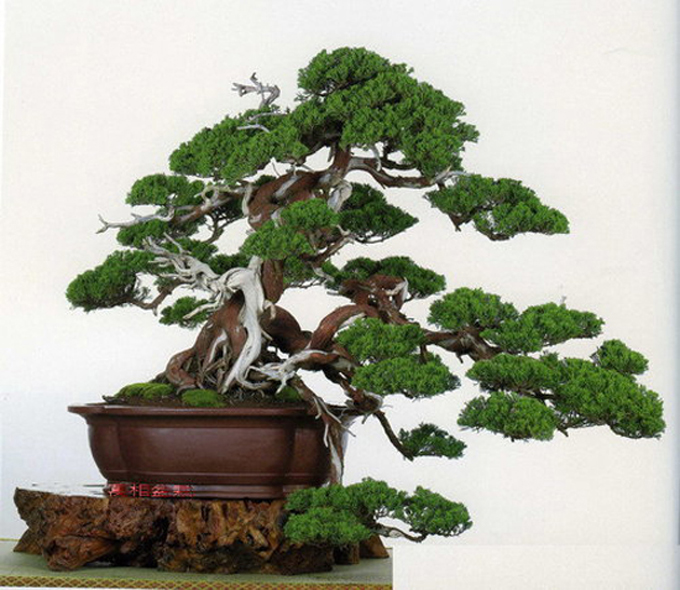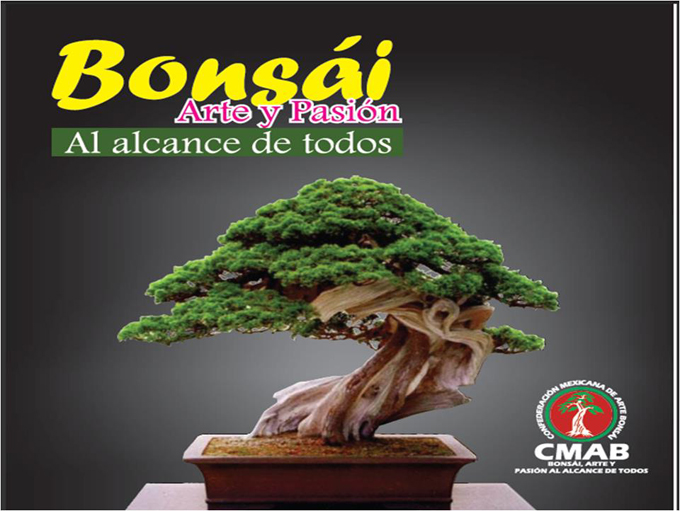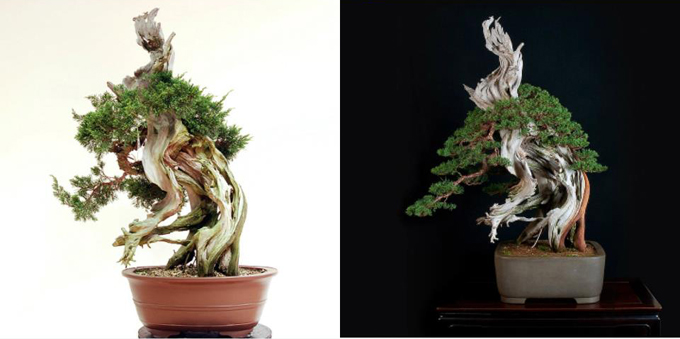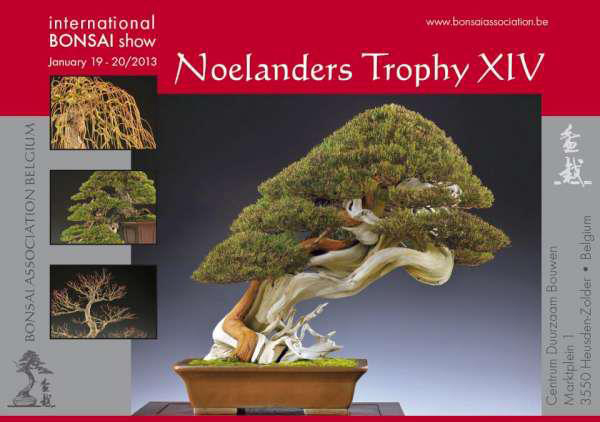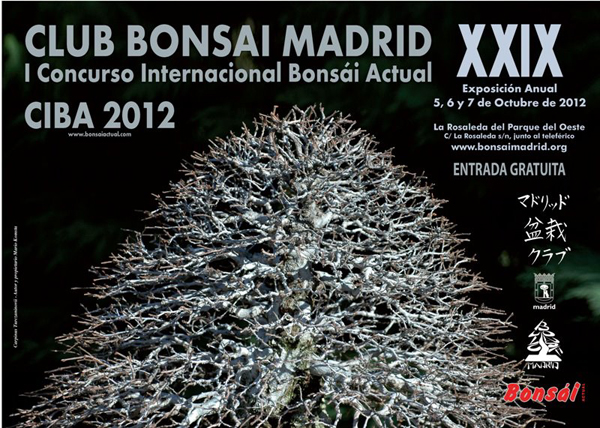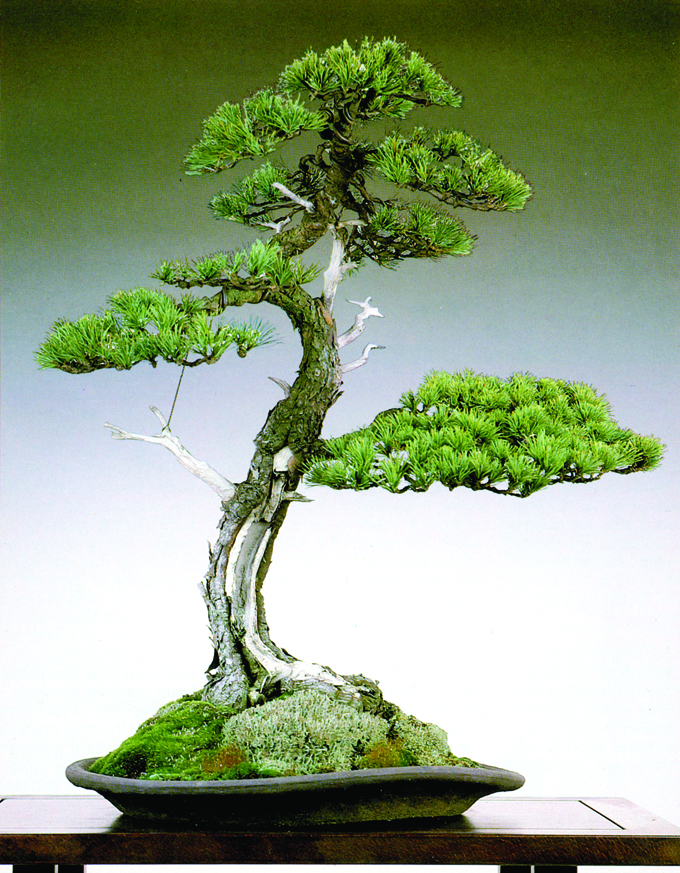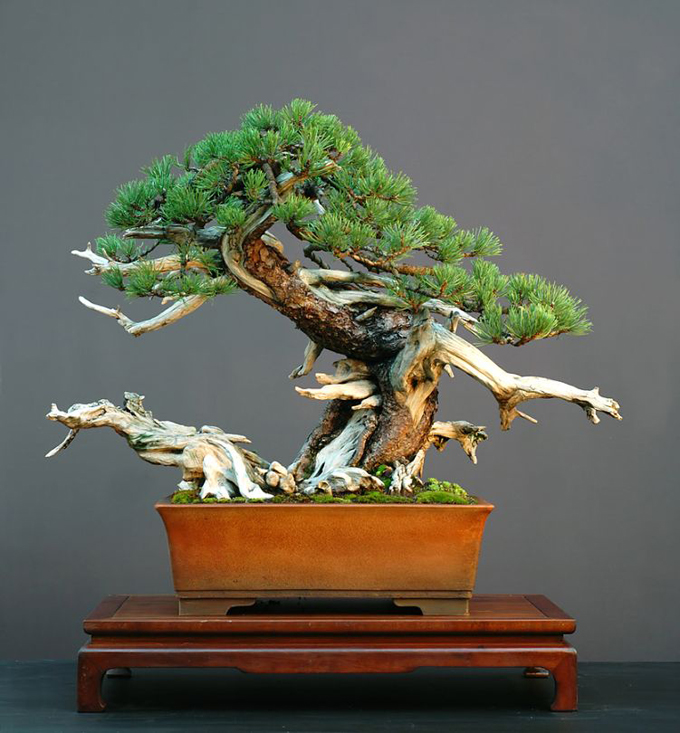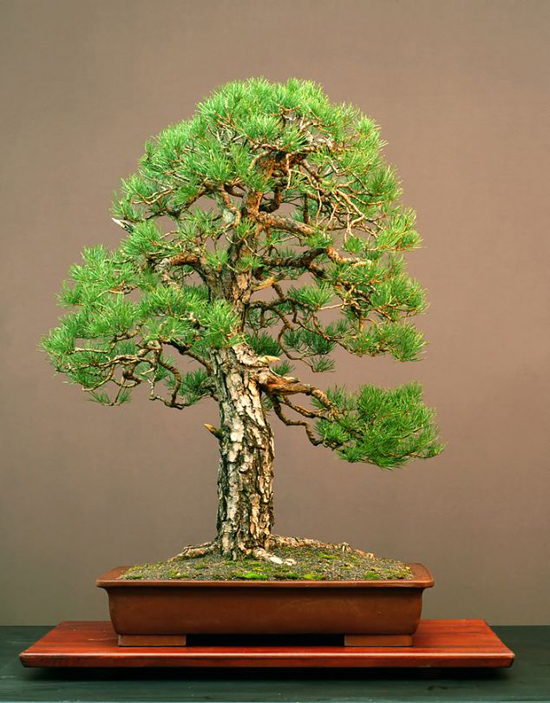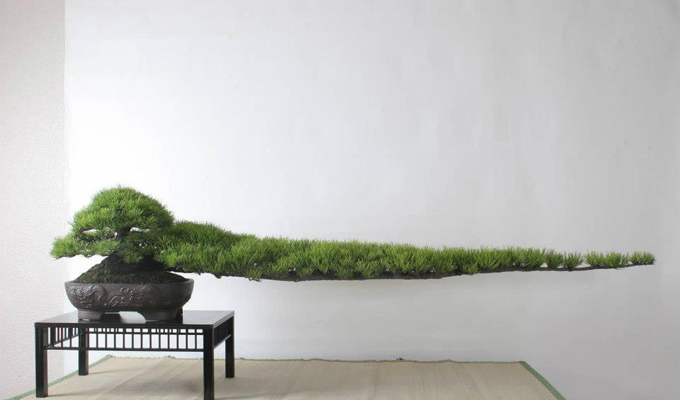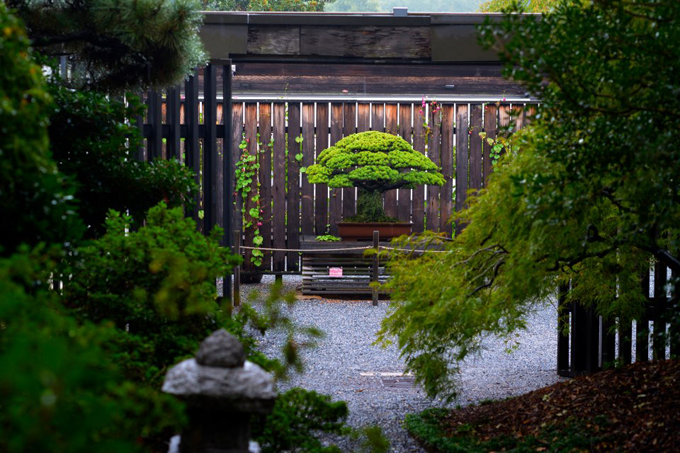 This photo of a very famous old Japanese white pine is from Michael Bonsai. It was taken at the U.S. National Bonsai & Penjing Museum.
This photo of a very famous old Japanese white pine is from Michael Bonsai. It was taken at the U.S. National Bonsai & Penjing Museum.
There are at least two things that stand out about this remarkable old tree. First, is its sheer magnitude. It’s hard to tell from photos, but the size of this tree is overwhelming (don’t take my word for it, go see for yourself). Second is the tree’s story…
Hiroshima Survivor
Thursday, March 8, 2001 was anything but a typical day at the National Bonsai & Penjing Museum. That morning two Japanese brothers landed at Dulles International Airport and, after checking into their hotel, headed straight to the Museum. Shigeru Yamaki, 21 years old, and his brother, Akira, 20, are the grandsons of the late bonsai master Masaru Yamaki, who in 1976 donated one of his most prized bonsai as part of Japan’s Bicentennial gift to the American people.
When the brothers arrived at the Museum, they approached one of the volunteers on duty that day, Yoshiko Tucker, asking her in Japanese for directions to where their grandfather’s bonsai might be found. Yoshiko and another volunteer, Michiko Hansen, quickly alerted Curator Warren Hill that important visitors had arrived. Warren then greeted the brothers and guided them to the magnificent Yamaki bonsai.
This Japanese white pine (Pinus parvifolia) is approximately 375 years old, and is the oldest specimen in the Japanese Bonsai Collection. Masaru Yamaki had made the gift of this bonsai before the brothers were born and so they had never seen it, although they were very familiar with it through photographs and family stories. As they stood respectfully in front of their grandfather’s ancient bonsai, Warren could not imagine the bonsai’s hidden past that was about to be revealed to him… you can enjoy the rest of the story and some remarkale old photos here.
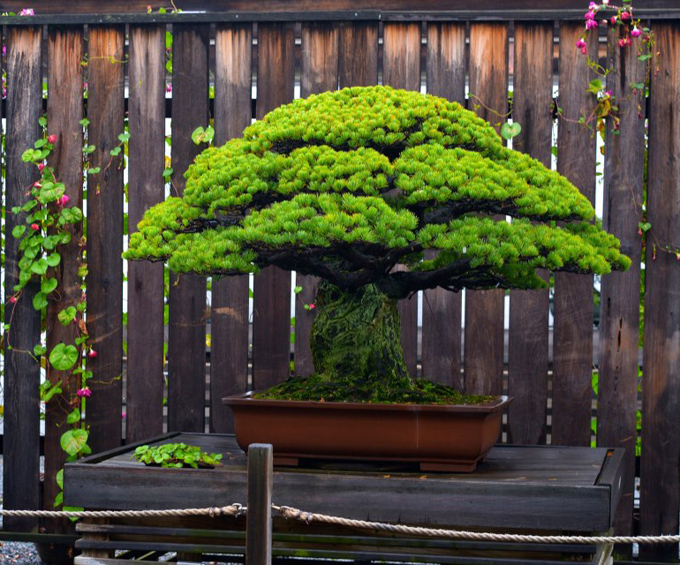 Without anything to contrast to, it’s difficult to appreciate the magnitude of this tree. Photo courtesy of Michael Bonsai.
Without anything to contrast to, it’s difficult to appreciate the magnitude of this tree. Photo courtesy of Michael Bonsai.
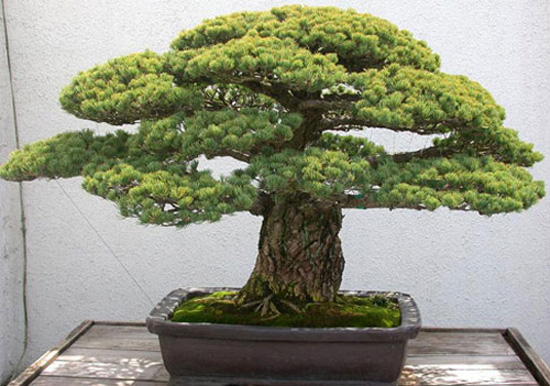 An earlier photo from the Bonsai & Penjing Museum’s website. You might notice that the crown is more open here than in the recent photos by Michael Bonsai. Though the fuller and seemingly larger crown in the more recent photos is magnificent and I’m not sure I’d change anything about it, still, this more open, lighter crown creates a nice sense of balance and proportion and tends to emphasize the massive trunk. We featured this photo and the other older photos above in two posts in early 2009 (here and here).
An earlier photo from the Bonsai & Penjing Museum’s website. You might notice that the crown is more open here than in the recent photos by Michael Bonsai. Though the fuller and seemingly larger crown in the more recent photos is magnificent and I’m not sure I’d change anything about it, still, this more open, lighter crown creates a nice sense of balance and proportion and tends to emphasize the massive trunk. We featured this photo and the other older photos above in two posts in early 2009 (here and here).
